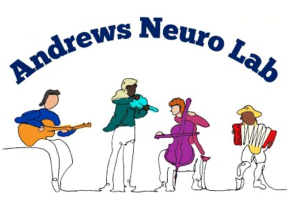 This summer I was awarded funding through the UNC Russian Flagship Program’s Student Professional Development to work in the Andrews Lab at Duke University with Dr. Edna Andrews. My summer project was related to improving the quality of Online Russian Grammatical Dictionary through morphological networking of common word roots to ensure that they were accurately connected to their related words. Since there are hundreds of words in the dictionary, I developed an approach to most efficiently scan the pertinent words. When beginning work on a new word root, I looked at the pre-existing set of connected words, when available, to pick out common letter combinations that were present in many of the words. For example, for related words of писать, nearly all the connected words had the letters “пис”. Then I searched through the dictionary for words that contained the letter combination of interest, and I checked to see whether they were accurately linked to other words with the root in question. When searching, it was crucial to consider the meaning of the words, not just the written similarities. There were words that had the letter base combination I was searching for but did not morphologically link to the family of words I was working on: a notable example of such a trend was the combination of “мен” that was prevalent in the words connected to “менять” (change). There were many instances of loanwords from English that contained “мен”, such as бармен (bartender) or бизнесмен (businessman), or even other word families that had a similar root, such as беременеть (pregnancy) or время (time). Additionally, there were words with compound roots (рукопись is connected to both рука and писать) or those with non-literal roots (летописание which has “лето” (summer) but is not morphologically connected to it). Because of the differences in meaning, it was crucial to analyze the word beyond its spelling similarities with other roots. The process allowed me to understand the nuances of words and their relations to each other as I ensured to connect the nouns, perfective and imperfective forms of verbs, adverbs, and adjectives to each other. Additionally, as a Computer Science major, it was interesting to see areas in which technology can help in the field of linguistics (picking out similarities in spelling, for example) and where it can end up falling short (such as meaning nuances).
This summer I was awarded funding through the UNC Russian Flagship Program’s Student Professional Development to work in the Andrews Lab at Duke University with Dr. Edna Andrews. My summer project was related to improving the quality of Online Russian Grammatical Dictionary through morphological networking of common word roots to ensure that they were accurately connected to their related words. Since there are hundreds of words in the dictionary, I developed an approach to most efficiently scan the pertinent words. When beginning work on a new word root, I looked at the pre-existing set of connected words, when available, to pick out common letter combinations that were present in many of the words. For example, for related words of писать, nearly all the connected words had the letters “пис”. Then I searched through the dictionary for words that contained the letter combination of interest, and I checked to see whether they were accurately linked to other words with the root in question. When searching, it was crucial to consider the meaning of the words, not just the written similarities. There were words that had the letter base combination I was searching for but did not morphologically link to the family of words I was working on: a notable example of such a trend was the combination of “мен” that was prevalent in the words connected to “менять” (change). There were many instances of loanwords from English that contained “мен”, such as бармен (bartender) or бизнесмен (businessman), or even other word families that had a similar root, such as беременеть (pregnancy) or время (time). Additionally, there were words with compound roots (рукопись is connected to both рука and писать) or those with non-literal roots (летописание which has “лето” (summer) but is not morphologically connected to it). Because of the differences in meaning, it was crucial to analyze the word beyond its spelling similarities with other roots. The process allowed me to understand the nuances of words and their relations to each other as I ensured to connect the nouns, perfective and imperfective forms of verbs, adverbs, and adjectives to each other. Additionally, as a Computer Science major, it was interesting to see areas in which technology can help in the field of linguistics (picking out similarities in spelling, for example) and where it can end up falling short (such as meaning nuances).
Streamlining the process of viewing morphologically linked words can serve to be an important tool for language learners, especially at a beginner level. By learning the meaning of one word, they are able to see dozens of its connected words that they may be able to recognize, even if they had no prior exposure to it. This could allow for earlier interactions with material that would have otherwise been too daunting due to the lack of vocabulary. Additionally, having a place where related words are grouped could be an important tool in understanding the patterns that exist with many common words and how they are modified to be used as different parts of speech, thus aiding not only their lexicon but also their knowledge of morphology and how they apply it to constructing sentences. With the definitions, examples, and pronunciations that are also a part of the Dictionary, morphological networking is another asset that can be used by language learners when using this helpful online tool.
 The experience affected the way I view my own vocabulary learning, as I have realized that there are various connections among known words. These connections are clues that can aid my comprehension even if it is the first time I encounter that particular word. This is a crucial change for me because vocabulary is the part of language-learning that I tend to find the most difficult. However, now I am more encouraged to tackle reading materials that I would not have attempted before due to my worries regarding my vocabulary knowledge. Additionally, the summer experience has led me to consider ways in which computer science methods can increase the efficiency of analysis of linguistic patterns in large documents. This is especially important to me because I am interested in a career in intelligence analysis. Work in this field often includes linguistic analysis of texts, and I would be curious to explore how/which computational methods can tie into this field — whether for efficiency or pattern recognition.
The experience affected the way I view my own vocabulary learning, as I have realized that there are various connections among known words. These connections are clues that can aid my comprehension even if it is the first time I encounter that particular word. This is a crucial change for me because vocabulary is the part of language-learning that I tend to find the most difficult. However, now I am more encouraged to tackle reading materials that I would not have attempted before due to my worries regarding my vocabulary knowledge. Additionally, the summer experience has led me to consider ways in which computer science methods can increase the efficiency of analysis of linguistic patterns in large documents. This is especially important to me because I am interested in a career in intelligence analysis. Work in this field often includes linguistic analysis of texts, and I would be curious to explore how/which computational methods can tie into this field — whether for efficiency or pattern recognition.
Tekla Maisashvili is a junior with a double-major in Neuroscience and Computer Science.
